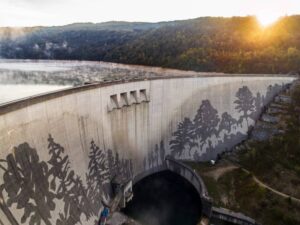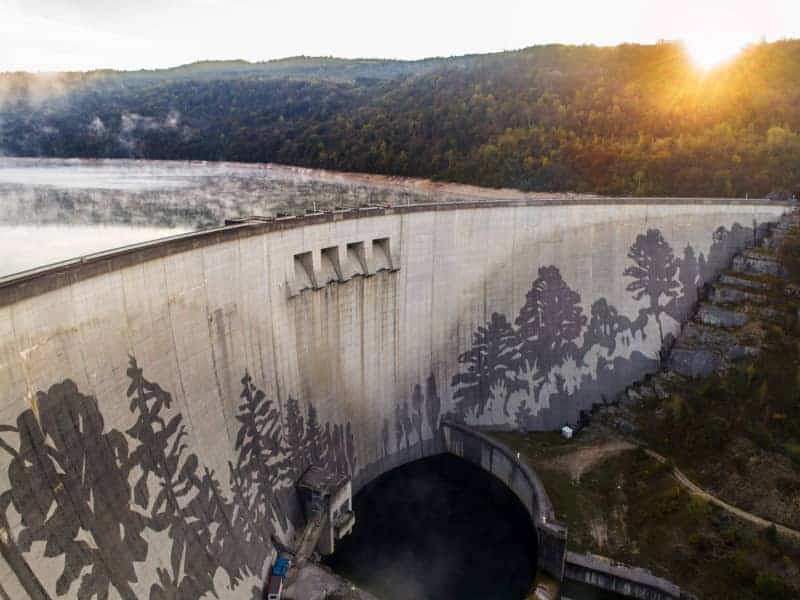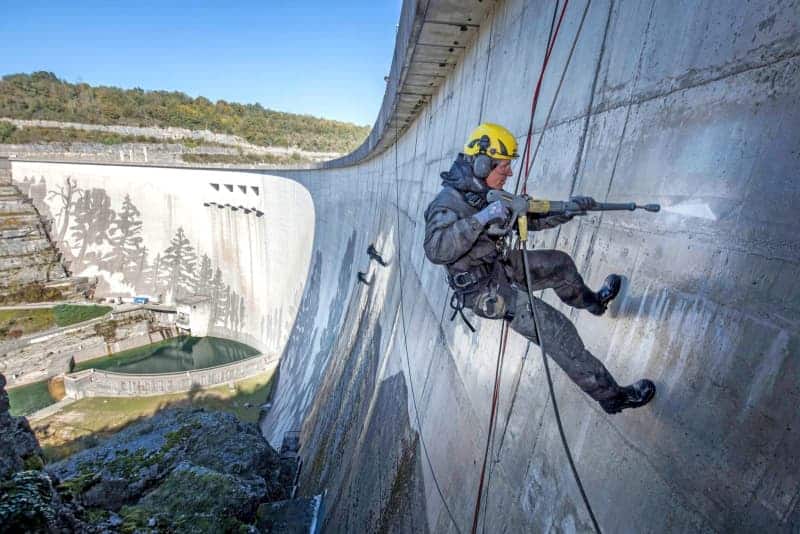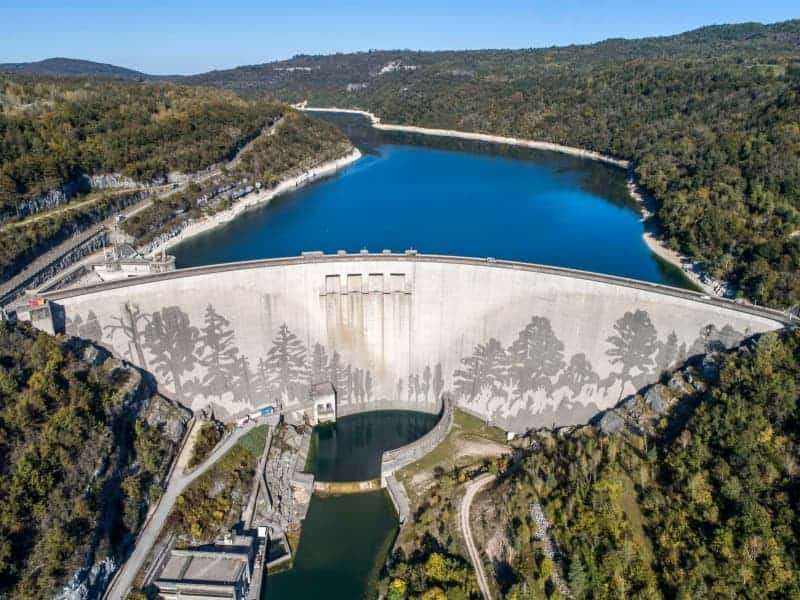
DPA

His latest work is his biggest yet, emblazoned on a dam and stretching the length of six or seven football pitches.
It took Klaus Dauven, 55, and his team of eight multiple weeks of work including 2,500 laser reference points in the French region of Vouglans.
In July, they lost two weeks worth of work because of storms.
“After the rains, we had to start from the beginning,” he said. But now “La Foret” (The Forest) is finished.
However, Dauven didn’t use any paint. Instead, he worked with what was already there. The artist, now safely back home in Germany, is a pioneer of a new art form called ‘reverse graffiti.’
“My works of art can sometimes be pretty large,” he says.
Dauven got his start in classic art, not in the street art scene, but is now following in the tradition of Harald Naegeli, the Sprayer of Zurich, a classically trained artist who made a reputation with his graffiti in the Swiss city.
But Dauven has his own method. Reverse graffiti is not about painting, but using streams of high-pressure water – around 250 bars’ worth – to wipe decades of layers of dirt and patina right off a wall. Instead of spray cans or paint brushes, Dauven uses pressure washers to create his works, which appear like silhouettes looming large.
He has not invented reverse graffiti, Dauven acknowledges. “Paul ‘Moose’ Curtis of England came up with the idea independently of me at about the same time,” he says. That time was 1997, when Dauven, studying art in Dusseldorf and Muenster, had his brainstorm.
At the time, he was working on a 2 metre-by-2 metre roll of paper that got covered in charcoal dust.
“The drawing got ruined. But, as I sucked up the dust with a vacuum cleaner, the idea presented itself.”
Since then, the art form has been gaining recognition.
“Reverse graffiti is conceptually and, in the eyes of the building owner, the more bearable form of graffiti,” says art researcher Gregor Jansen, head of the Dusseldorfer Kunsthalle art museum.
“Thanks to the effect of the negative, the removing, a switch is made. The visual message is laid bar,” he says. From his perspective, reverse graffiti is the more interesting version of the two art forms.
Because Dauven’s art is time-intensive and hard to sell, it usually requires support from sponsors to come into being. For example, a German producer of high-pressure cleaners subsidizes him when he is working – like he was in France – with a team of industrial climbers, multiple helpers and a 100-metre-long water hose.
Despite all the hurdles, the German artist has managed to produce major works in France, Germany, Japan and South Korea. He has created his images on bridges, dams and breakwaters, depicting plants, animals and faces. He says his choice of subject is usually inspired by the area surrounding the structure he is about to work on.
Dauven’s work can be ephemeral, depending on the weather conditions it is exposed to.
“It depends on the gradient of the walls, the direction it is facing and the climate. In Japan, a drawing I did on a dam was completely gone after two years. In the Eifel region [on the French-German border] it last five to six years.”
There was also a work in the German city of Cologne that was removed, but Dauven points out that that wasn’t his, but rather a reverse graffiti piece put up by an artist working under the name seiLeise (beQuiet).
To make sure they’re not gone forever, Dauven documents his graffiti with photographs, which are then collected in bound works.
Another key factor that separates his work from graffiti is the amount of acceptance it receives.
“It also appeals to the people who aren’t so attuned to art. They’re not hostile to me,” he says.




Recommended Comments
There are no comments to display.